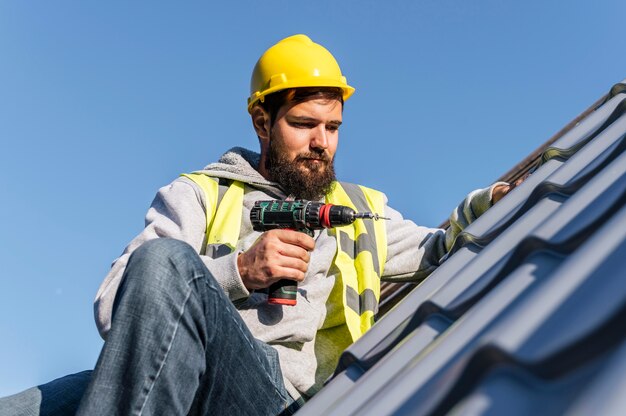
Sponsored article
The roof of a home is its first line of defense against the elements. Over time, even the most durable roofs can become vulnerable to damage if not properly maintained. Regular roof inspections are a crucial step in preventive maintenance, allowing homeowners to catch and address minor issues before they turn into costly repairs. In this article, explore how routine inspections can safeguard your investment, enhance the lifespan of your roof, and ultimately save you money.
Regular roof inspections are vital in identifying and addressing various roofing issues before they escalate into costly repairs. Among the most common problems discovered during inspection findings are leaks, which often result from damaged or missing shingles and can lead to water infiltration and significant structural damage if left unaddressed. Inspectors also look for signs of wear and tear, such as curled or cracked shingles, which compromise the roof’s integrity and may indicate the need for immediate maintenance. Additionally, they assess the condition of gutters and downspouts to ensure proper drainage, as excess moisture accumulation can cause severe damage. Structural weaknesses, caused by factors like age, weather conditions, or poor installation, are another critical focus during inspections, as they can undermine the entire roofing system. By identifying and rectifying these common problems early, homeowners can extend the lifespan of their roofs and avoid expensive repairs in the long run. For more detailed maintenance tips and professional insights, visit Midpoint Roofing. For more information on this topic, visit https://midpointroofing.com.
Early detection of roof problems through regular inspections is a vital component of effective roof maintenance that can lead to significant cost savings and enhanced home safety. By identifying issues such as leaks, damaged shingles, or improper ventilation early on, homeowners can address these problems before they escalate into major repairs or require a complete roof replacement. This preventative approach not only helps in avoiding the exorbitant costs associated with extensive damage but also prolongs the lifespan of the roof by keeping it in optimal condition. Furthermore, well-maintained roofs contribute to better home insulation, which significantly enhances energy efficiency, reducing heating and cooling costs. Enhanced safety is another benefit, as early detection and remediation of roof issues prevent hazards such as mold growth or structural weakness, ensuring a secure living environment. Overall, regular roof inspections and maintenance serve as a proactive investment in safeguarding the structural integrity and efficiency of your home.
Scheduling regular roof inspections is a crucial step in preventing costly repairs and ensuring your roof’s longevity. Begin by incorporating a roof maintenance plan into your annual home upkeep routine, marking reminders to schedule inspections, ideally in spring and fall. When choosing inspectors, seek referrals from neighbors or check online reviews to find a certified and experienced professional. Preparation is key; clear your attic of clutter and ensure safe access to your roof for the inspector. During the inspection, expect a thorough evaluation of shingles, gutters, flashing, and underlying materials. The inspector will identify potential issues like leaks, mold, or wear and tear that could escalate into expensive problems if not addressed timely. Integrating these inspections into your home care regimen not only maximizes your roof’s performance but also gives you peace of mind that you’re proactively managing your home’s structural integrity. Follow these preparation tips to make the most of your roof’s health and longevity.